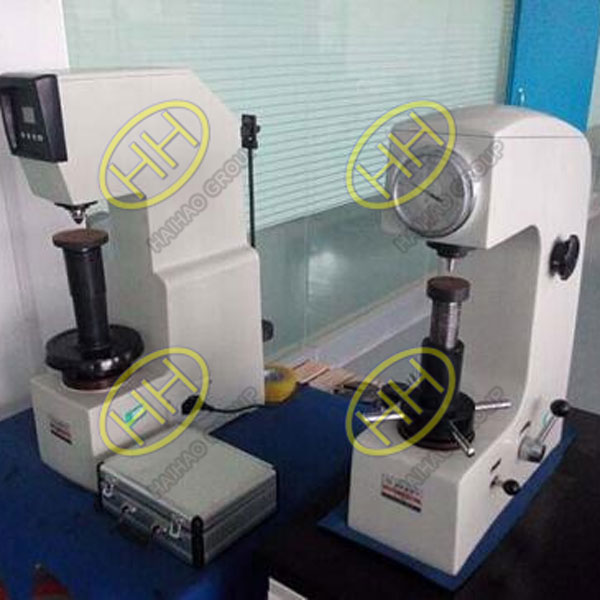What are the three types of hardness tests?
Hardness is a measure of a metal material’s resistance to localized deformation, particularly plastic deformation, indentation, and scratching. Higher hardness often implies better wear resistance. The hardness value depends not only on the material’s properties but also on the testing method and conditions. Here are some common hardness testing methods used in the industry:
1.Brinell Hardness Test
Principle: In the Brinell hardness test, a hard alloy ball indenter is pressed into the material under a specified load. The diameter of the indentation left on the material’s surface is measured and used to calculate the hardness value.
Expression: Hardness value + symbol + test conditions (e.g., 200HBW10/1000/30 means a Brinell hardness of 200 using a 10mm carbide ball indenter under a 1000kgf load for 30 seconds).
Advantages:
Large indentation area, providing a good indication of the material’s average hardness.
Stable and repeatable results.
Disadvantages:
Testing is cumbersome and results in large indentations.
Significant damage to the material’s surface, making it unsuitable for finished parts and thin materials.
Applications: Suitable for cast iron, non-ferrous metals, and annealed, normalized, and tempered steels. Especially appropriate for softer metals like aluminum, lead, and tin.
2.Rockwell Hardness Test
Principle: The Rockwell hardness test uses either a diamond cone or steel ball indenter. The indenter is pressed into the material under a preliminary load, followed by a larger load. The hardness is determined based on the depth of the indentation after the larger lhardness testsoad is removed while retaining the preliminary load.
Scales: Various scales (A, B, C, etc.) are used to measure different hardness ranges, with the most common being HRA, HRB, and HRC.
Expression: Hardness value + symbol (e.g., 50HRC means a Rockwell hardness of 50 on the C scale).
Advantages:
Quick and straightforward measurements.
Smaller indentations, making it suitable for finished products.
Disadvantages:
Smaller indentations can result in less accurate hardness values.
Lower repeatability, requiring multiple measurements to obtain an average value.
Applications: Widely used in industry for a range of materials, from soft to hard and thin to thick samples.
3.Vickers Hardness Test
Principle: Similar to the Brinell test, the Vickers test uses a diamond pyramid indenter. The hardness is calculated based on the load applied and the surface area of the indentation, determined by measuring the diagonal lengths.
Expression: Hardness value + symbol + test conditions (e.g., 640HV30/20 means a Vickers hardness of 640 under a 30kgf load for 20 seconds).
Advantages:
Small test loads and shallow indentations.
Wide application range, from very soft to very hard materials.
Direct comparison of hardness values without the need for different scales.
Disadvantages:
Requires a smooth sample surface.
More complex indentation measurement process.
Less suitable for large-scale testing.
Applications: Ideal for measuring surface-hardened layers, chemically treated surfaces, and various metal materials.
In summary, each hardness testing method has its unique advantages and disadvantages, making them suitable for different applications. The choice of method depends on factors like the type of material, the required accuracy, and the specific testing conditions.

